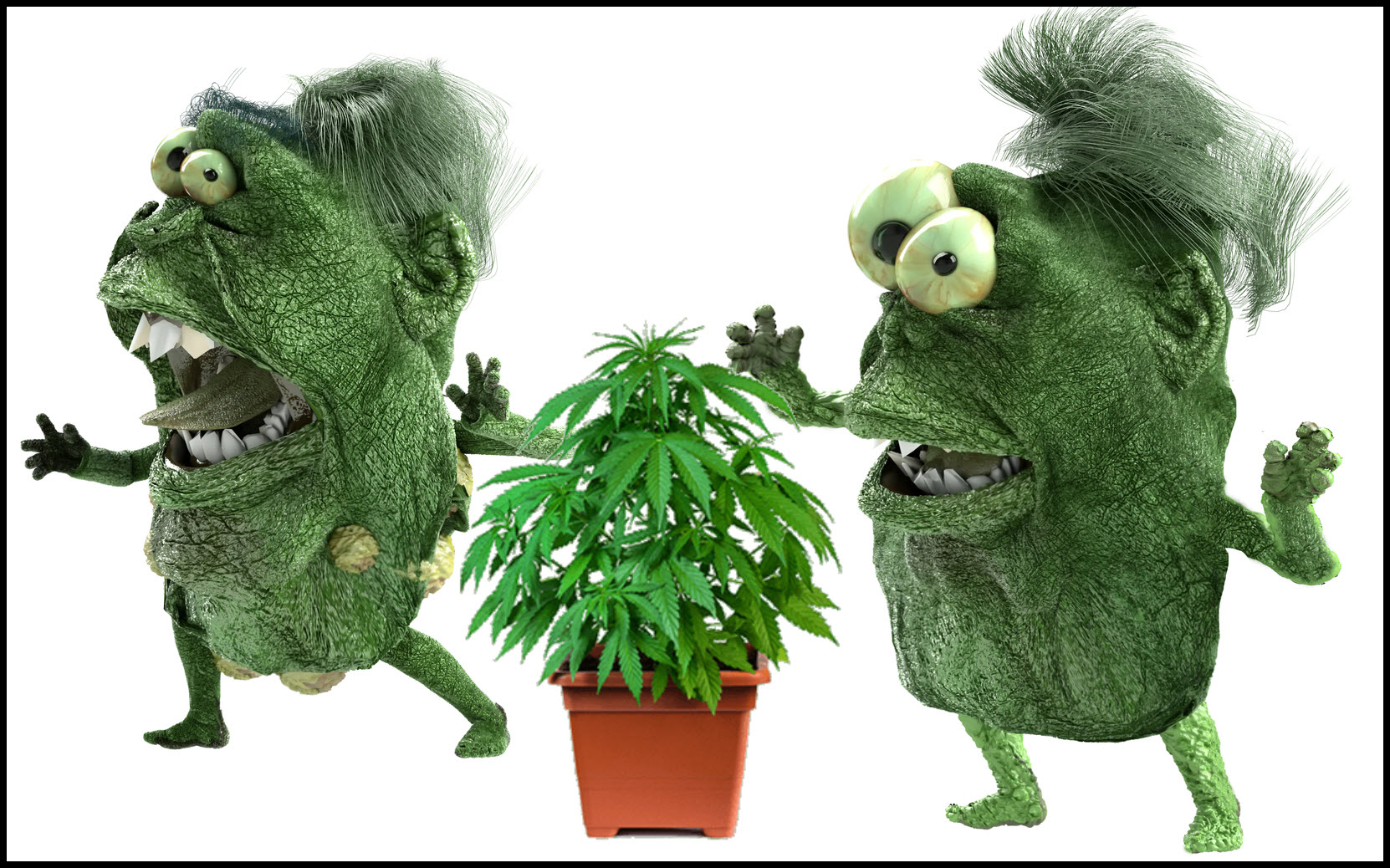
Cannabis Geeks – Common Marijuana Mutations You Might See In Your Plants See
https://www.growweedeasy.com/7-common-cannabis-plant-mutations
Cannabis is a fascinating plant that can manifest itself in a variety of ways.
Some plants are shorter than others, while others have different colors and smells. It seems that every day we learn something new about the plant and the cannabinoids, terpenoids and flavonoids it contains.
But just as humans carry “mutated genes”, the cannabis plant also has the ability to transform itself into something else.
Today we’re going to take a closer look at the different common types of mutations you can find if you grow enough cannabis.
Various factors play a role, such as environmental conditions, suppressed genes and much more.
By the end of this article, you should be able to identify a few different mutations and hopefully not freak out if they show up in your own grow.
So let’s check out some “cannabis freaks”!
A three-leaved sprout
The first common mutation we’ll look at is a three-leaf scion. Typically, when you sprout cannabis, you start with two starter leaves, which are naturally circular, and then two small cannabis leaves form.
However, in some cases you can see a third cannabis leaf on the first shoot, which means you have a three-leaf mutation.
While you generally don’t treat this plant any differently than a two-petalled scion, these have about 1/3 more side branches than your typical plant – meaning this mutation can be functional when exercised.
Trefoil? Did someone say SCROG?
Leaf buds
The leaf of a cannabis plant has many uses, but most growers throw it away because it has no practical use in terms of consumption.
You could perhaps make a lemon balm or weed leaf tea, or even add a few leaves to your salad – but beyond that, it’s not much use to the grower.
In some cases, however, the center of the leaf may begin to form buds of its own. These are popcorn buds and some growers may not like this as it would affect “top bud growth”, but other growers enjoy the added “bud count”.
For my part, I would leave it at that just to see how big these “leaf cores” really can get.
Bi-tone leaf structure
The chimera cannabis leaf has a half color and a different one. This is less common, but not as unusual as you think.
There are plenty of pictures online that show you how a single leaf can be two colors – like purple and green. This can even carry over to the buds, where one half of the bud takes on different properties than the other half.
While I haven’t personally seen this on my own grows, it’s definitely something I want to see with my own eyes.
I think I just have to keep growing a lot of weed to hopefully get lucky!
Morphed leaf structure
We all know and love the pointed structure of the weed leaf. It’s very easy to spot.
However, sometimes these leaf shapes can get a little wobbly. For example, there are leaves with two tips, leaves with three tips, such as those grown with the Ducksfoot variety.
Some of these traits are bred into specific strains – taking random mutations and focusing on preserving those freak genes.
This type of selective breeding can help breeders differentiate their plants from the competition.
More on that later.
More or less points
When talking about leaf structure, the typical cannabis leaf has seven points within the entire leaf structure.
However, some varieties even mutate and do not form the typical leaf structure. There are certain cannabis plants that have round leaf structures and look more like a normal bush than a typical cannabis plant.
Cannabis twins
Sometimes a cannabis plant can sprout two identical taproots, which then develop into 2 different stems with their own leaves.
While it is entirely possible to grow these two taproots to maturity, growers typically remove the weaker one so the stronger one can grow to harvest.
However, if you are careful, you can both easily transplant and literally have “cannabis twins”.
What can you do with all of these mutations?
While there are plenty of other mutations that I haven’t covered, I think this is a good place to start thinking about what those mutations could mean, if the right kind of ingenuity is used.
We have already seen that Ducksfoot Strain uses a leaf mutation to isolate itself in the market.
However, if we delve a little deeper into the upcoming “patent wars” – in terms of strain genetics – breeding certain traits can be a means of protecting your intellectual property.
What can separate your haze from the crowd? Perhaps buds are sprouting from the center of its 13-pronged leaf structures, making it look like a peacock?
Or maybe you could grow an auto-topping gene into a thick and heavy bushy plant to create the perfect indoor mass producer.
If you haven’t realized by now that the cannabis game is just beginning, and the more people get involved in growing and experimenting with cannabis, the more innovations we will see.
Of course, many of these mutations are known, but when we come to a world where multi-billion dollar brands are investing research and development into differentiating their product, it is only a matter of time before the physical structure of certain strains begins to morph .
The best part is that you – the home grower can already experiment with these mutations. Hell, maybe you create your own twist on Ducksfoot!
There are no limits to what we can achieve with cannabis once the world is allowed to participate and experiment with it without fear of legal retaliation.
CHECK YOUR PLANTS FOR THESE PROBLEMS, READ MORE …

HOW TO TREAT YELLOW LEAVES IN YOUR CANNABIS PLANTS!
OR..

HOW TO DETECT LIGHT BURNING ON YOUR CANNABIS PLANTS!

Post a comment: